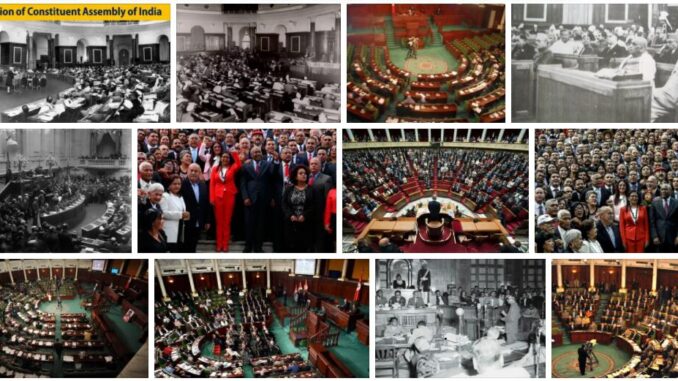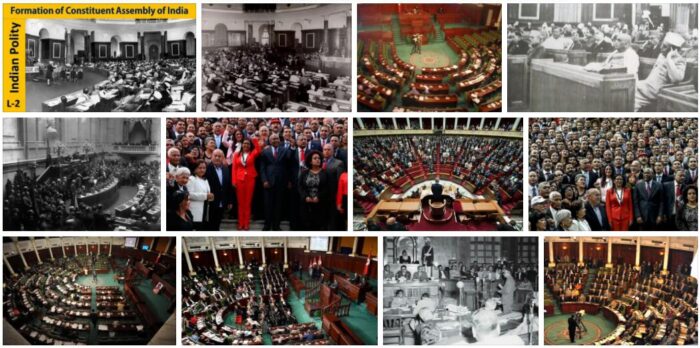
Assembly, originating from the French word assemblée, is an institution that is created from the summons of a certain number of individuals who meet to debate some issues and make a decision regarding them.
Constituent, meanwhile, is a term used to designate the person or to the (physical or symbolic) that creates or determines something composed object. Therefore, there are different types of constituents.
A constituent assembly is the institution that is specifically conceived for the creation or modification of a Constitution. It should be noted that the Constitution, also known as the Magna Carta, meets the most important rules of a State.
The constituent assembly, whose members are known simply as constituents, has the power and the power to dictate or change these norms that will govern the operation of the political and social system of a territory. Constituents are elected by the people, so a constituent assembly is an organ of democracy.
It is said that the first constituent assembly was the one that took place in France in 1789, when the Revolution began. This National Constituent Assembly remained in history not only for instituting the French Constitution, but also for eliminating the feudal regime and for approving the Declaration of the Rights of Man and of the Citizen.
However, it should not be forgotten that said assembly was characterized by another important series of data of interest that marked a milestone in history:
* gave rise to the realization of the Civil Constitution of the Clergy, which replaced the Concordat of 1516 and carried out the reorganization of the Church of France in a profound way. The result of that was that the priests became ecclesiastical public officials;
* The Assembly was made up of about 1117 representatives from the three existing States: 604 from the Third State, 295 from the clergy and 278 from the nobility;
* many were the important figures of that time who took part in this “institution”. Specifically, among those we could highlight Honoré Gabriel Riquetti (Count of Mirabeau), Marqués de La Fayette, Maximilien Robespierre, Jean-Joseph Mounier and Jacques Antoine Marie de Cazalès;
* one of the most important days of the life of this National Constituent Assembly was the night of August 4, 1789. And that feudalism was brought to an end on that evening at the proposal, curiously, of two nobles: Louis-Marie de Noailles and Armand Desiré de Vignerot du Plessis;
* the Tuileries of the Tuileries, Versailles or the Archbishop’s Palace of Paris were the three enclaves that acted as the setting for the development of the sessions of this important entity in the History of France and the world;
* September 30, 1791 was the day the Assembly was finally dissolved.
Among the constituent assemblies that have materialized in recent years are the National Constituent Assembly of Venezuela (held in 1999) and the National Constituent Assembly of Ecuador (2007).
It is possible to distinguish between two kinds of constituent assembly:
* not institutionalized: it is conceived spontaneously, without prior regulation. One of the clearest examples is found in that of the provinces of Upper Peru, which originated the Bolivian Republic in 1825;
* institutionalized: the Constitution itself regulates and contemplates this type of assembly, which is generally an organization that was born with the purpose of carrying out reforms in its texts. It is pluralistic, elective, representative, temporary and democratic in nature. This kind of constituent assembly is formed to make a particular amendment and dissolves at the end of its purpose.
